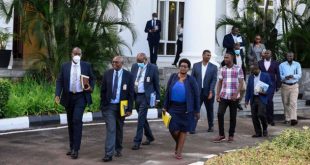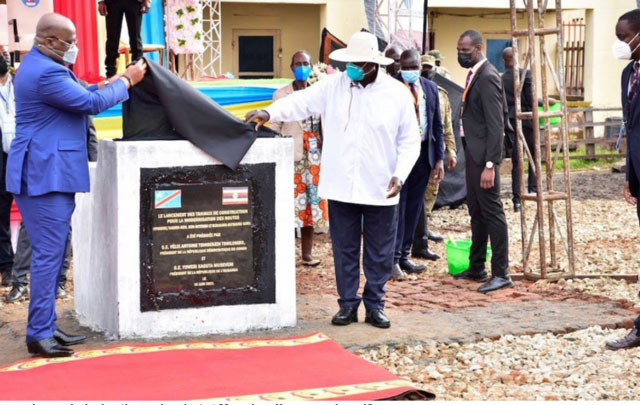
How the rebellious Kasese district became launchpad for grand 223km infrastructure project
ANALYSIS | Ian Katusiime | It was the launch of a big ticket project with newly re-elected President Yoweri Museveni fresh from naming his cabinet, hosting his counterpart from Democratic Republic of Congo (DRC); President Felix Tshisekedi, on June 16 at the border town of Mpondwe in Kasese.
Museveni and Tshisekedi were meeting to commission the road infrastructure connectivity project between Uganda and DRC. The roads are Mpondwe/Kasindi-Beni Road (80km), the Bunagana-Rutshuru Road (89km) and the Beni Butembo Axis Road (54km).
Museveni thanked Tshisekedi for bringing DRC into the East African Community (EAC).
“You cannot talk of EAC without talking about Congo because all these people have been part of EAC since time immemorial,” he said. “I am very happy about the project which we have discussed in detail but also on the issue of security in the region.”
Uganda has deployed troops at the areas of construction for the investment project but reports also suggest there will be more deployments to take on the armed groups that roam the eastern parts of DRC. The bigger part of the road project will be in DRC and Uganda has made security promises to the country.
DRC is not yet formally in the six member bloc but under Tshisekedi, Uganda’s neighbour to the west is making all the right moves.
“I thank my elder brother Museveni for the warm welcome and for the many important discussions we have had,” Tshisekedi said and added, “As brothers instead of building walls. It is better to build bridges. This initiative is what we must continue doing.”
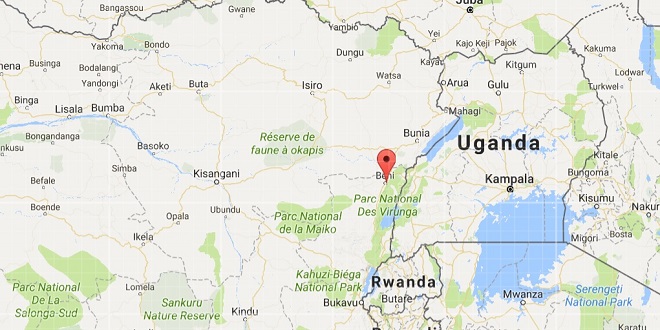
The glitzy events of June 16 as the two heads of state made flowery speeches and signed agreements for the construction of the 223km roads at a cost of $330 million are in stark contrast to five years ago when Museveni could only visit Kasese in military fatigues with his AK47 and a whole garrison of the UPDF at guard.
In April 2016, Museveni spent a week in the region meeting with district chairpersons, MPs, RDCs, probing them on the origins and causes of the brewing ethnic conflicts that brought the nation on edge. The President also met with cultural and opinion leaders to try to stem the conflict that was rapidly spreading. To worsen matters, in February 2016, the National Resistance Movement (NRM) was routed when all six parliamentary seats went to the opposition Forum for Democratic Change (FDC).
In the meetings, Museveni was reeling from the rejection and it would later manifest in a very ugly way. There was simmering tension between the Rwenzururu Kingdom in Kasese and the government.
In November that year, the UPDF torched the Rwenzururu royal palace in a daring attack that claimed the lives of more than 100 royal guards.
But slowly, Kasese, the heart of the Rwenzori region is turning the corner on this political rejection although old wounds remain. NRM reclaimed three MP seats, the district chairpersonship and 52 out of the 70 district councillorships.
The winning back of Kasese by NRM was a well calculated move by party mobilisers, says Reuben Mbauta, a civil society activist in Kasese district. “For the last twenty years, Kasese was opposition. People recognised a need to get back into government,” says Mbauta.
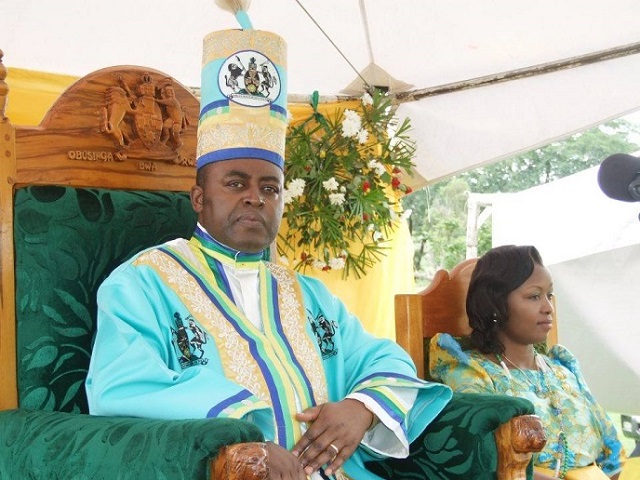
Mbauta attributes NRM’s bounce back to the strategic mobilisation skills of the Resident District Commissioner (RDC) Lt. Joel Walusimbi in Kasese that courted ordinary folks, youth and women groups in the last five years that vanquished the opposition forces and handed the famous town and district back to the ruling party which ultimately opened the door for government projects.
Mbauta says the kingdom factor was also key. He says people saw a need for the kingdom to reconcile with government; rescue the Omusinga of the Rwenzururu kingdom; Charles Wesley Mumbere, and get the hundreds of incarcerated royal guards out of jail. Mumbere was arrested in 2016 after the raid on his palace. He is facing charges although he was released on bail. The government is reportedly taking care of him.
There were negotiations between civil society and kingdom officials and government behind the scenes to have all these freed, says Mbauta.
“132 royal guards were released around January,” he says. This was just before the January 14, 2021 presidential elections where President Museveni was running for re-election for a sixth elective term.
There were other developments, he says. “There was a volunteer spirit by some who offered to campaign, clusters were created and some people felt aligned with the NRM manifesto.”
Salim Saleh factor
Around 2019, Museveni sent his brother, Gen. Salim Saleh, to Kasese. Gen. Saleh is officially the Coordinator of Operation Wealth Creation (OWC); an agricultural assistance scheme, but also the President’s fixer on a broad range of national issues. Saleh spent three months in the district meeting leaders, residents and coordinating government work in the area. He also met FDC officials in the district and lured them to government.
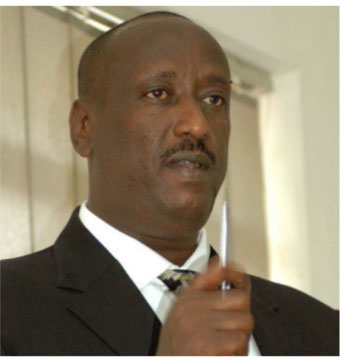
Saleh was involved in the coordination of AGRO-LED, a ministry of Local government venture, that is responsible for skilling the youth and employing them.
“He mobilised the masses. He brought some investors to Kilembe Mines, Katwe Salt Industries, Kasenyi Fishing Works and Akabako Maize Mills,” he says. “It was right for the people of Kasese to vote for NRM”.
A few weeks ago, President Museveni was in Kasese to launch an industrial park. While there, he said he would never agree to the breakaway of an inch of Uganda.
Enoch Bwambale, an NRM mobiliser, says the issue of the Rwenzururu Kingdom was a turning point in the performance of the NRM in recent elections. He says previously NRM leaders; including Crispus Kiyonga, were against the kingdom for a long time. “The President put together a committee led by Kajura (former deputy prime minister) and its report stated that 87% of the people in Kasese wanted a kingdom.”
Around 2009, Bwambale says the kingdom was restored but there was a problem. A few years later, the government started blocking the movements of the Omusinga (king); Charles Mumbere. “People realised they had a kiwani (false) king and they were not happy. He could not visit anywhere,” he says. This led to the clashes between royal guards and security in 2014 and set the stage for confrontations.
Bwambale however says the appointment of Lt. Walusimbi as RDC three years ago was a game changer because people of Kasese realised they had a leader who was pro-kingdom because he was from Buganda which is renowned for its kingdom traditions. “He was social. He realised the dynamics on the ground. He would go and sleep with the people in mountains and he won their hearts,” Bwambale tells The Independent.
The new RDC was also hands-on, he would engage road contractors on road projects and was actively involved in service delivery. “People soon started realising that if you do not vote NRM, you would not get services,” Bwambale says.
NRM cadres in the area who were anti-kingdom read the room and changed their stance. Bwambale argues that the district leadership under FDC did not yield fruit. “Roads were dying. They were selling jobs, the councilors were corrupt. They just enriched their own.”
He says FDC MPs like William Nzoghu and Robert Centenary made promises they did not keep. He also says they were to blame for a lot of misinformation about the kingdom. In the end, NRM won three seats; the Kasese Municipality seat, Busongora County North and South. FDC reclaimed the Kasese Woman MP seat, Bukonjo County West and Bukonzo County East seats.The commissioning of the 223km road connectivity project with DRC at Mpondwe in Kasese was not just a strategic geo-location but a fully-fledged government operation to put Kasese back in the right hands after the incursion of FDC in 2016. The government of Uganda will meet 20% of the project cost. However the contractor of the mega project is not any other company but Dott Services. Dott Services is a contractor with strong ties to Saleh, whose handiwork in Kasese is well documented.
In October 2020, Museveni mooted the idea of constructing roads linking Uganda to DR Congo to bolster the trade volume between the two countries. This was after close to two years of Rwanda shutting its border to Uganda closing off immense opportunities for Ugandan traders. The Uganda government has also just reconstructed the bridge at Mpondwe which had broken down due to wear and tear.
History of conflict
Kasese is renowned for its tourism and industrial activity because of the Queen Elizabeth National Park and the once thriving Kilembe Mines. However it has also been home to rivaling communities over land and other resources for decades. Kasese was a flashpoint with elements in the districts fighting for a breakaway from Uganda in 2016 code named Yiira Republic.
There were other deep-seated ethnic conflicts in the Rwenzori sub region which covers Bundibugyo, Kabarole and Ntoroko districts. UPDF and Uganda Police were also sucked in the skirmishes that had been flaring since 2014.
In reality, the conflicts in the region had taken root as far back as 1925 when the British colonial government created the Lake George Game Reserve, according to informed sources. The colonial administration later also created the Kazinga National Park in 1952, later renamed Queen Elizabeth National Park. These demarcations are said to have caused severe contestations over land because of the communities who felt dispossessed.
The conflicts would lull and spring up over unaddressed grievances over time. This agitation came full circle when Rwenzururu fighters launched a fierce rebellion and the government responded with a full scale assault in November 2016 leading to the infamous massacre of the royal guards by the UPDF under the command of Lt. Gen. Peter Elwelu, then second division commander of the UPDF. There are still loud calls for justice from the families of the bereaved and those of the hundreds who remain unaccounted for.
Sources in Kasese however say the government and the people appear to have struck a compromise.
 The Independent Uganda: You get the Truth we Pay the Price
The Independent Uganda: You get the Truth we Pay the Price
